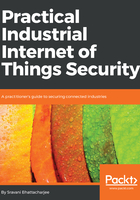
IT and OT convergence – what it really means
Industrial systems generate a lot of data. The introduction of the Industrial Internet and Industrie 4.0 is driving a shift in the context for this field generated data. In a manufacturing plant, for example, the data generated by a sensor can pertain to control and actuation, and it may contain telemetry and diagnostics data. The latter may not be immediately consumed by the control level devices, but this telemetry and diagnostics data can be analyzed by higher business application functions for process optimization, anomaly detection, predictive maintenance, and other value-added applications.
This compelling dimension of IIoT is a main driver for organizations to redefine and transform their existing control and information architectures.
Traditionally, industrial enterprises have kept their operational and IT domains separate. The operational dynamics of OT and IT domains have also been discreet. This has two major implications with respect to the Internet of Things:
- An IIoT solution involves connectivity and hardware-software solutions provided by a rather complex ecosystem of vendors. Some IIoT solutions such as connected cars, fleet management, and so on that involve technologies from more than one industry vertical; this calls for the greater need for system interoperability. These factors are driving OT environments to transition to open, standards-based, IT-based solutions, such as the internet protocol stack, containerized software platforms, and so on.
- The main value proposition of IIoT centers on harnessing the value of machine and sensor data to create efficient processes and services. Centralized cloud platforms performing advanced analytics are essential components of IIoT architectures. OT platforms and ICS/SCADA networks now connect to the cloud using IP-based connectivity. This ubiquitous connectivity exposes enterprises to new cyber risks and attack vectors, raising the need to securely interconnect enterprise IT and OT networks.
While legacy industrial deployments (brownfield) may continue to coexist, IIoT is also a major driver for prioritizing security and integrating security into newer architectures.
From a security standpoint, the convergence of IT and OT translates to intertwining the principles of safety and reliability from the OT environment with those of cybersecurity from the IT environment. Now is the time to drive sufficient clarity on the expanded significance of industrial security, and to make it easy for industrial end users to understand and identify security as a critical issue that needs systematic investment.